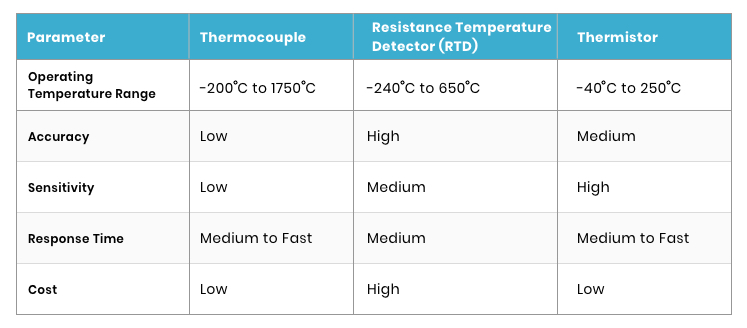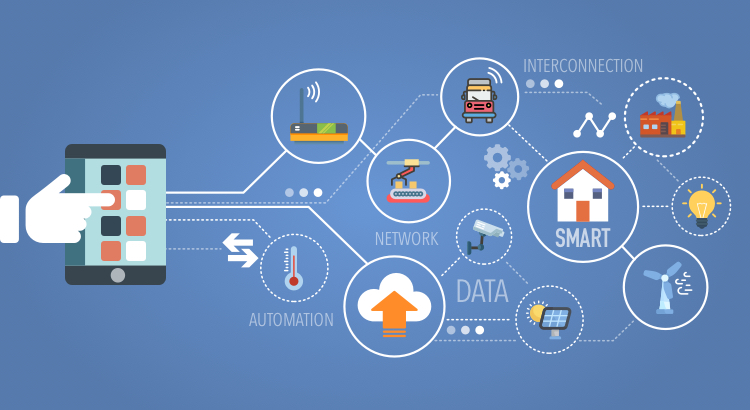How Sensors Work
Any discussion on sensors invariably attracts a parallel between them and human sensory organs, which is not entirely misplaced. The human body is, after all, a grand feat of engineering. Music, movies, cuisine are gifts of our extraordinary sensory capabilities. Just as the human sensory organs allow sound, light, temperature, and other external stimuli to be perceived, sensors embedded in everyday objects allow them to sense changes in their immediate environment. The sensors relay this information to a software platform—comparable to the central nervous system in the human body—where it is further drilled and analyzed and turned into actionable insights.Key Considerations During Sensor Selection
There are many sensors, each best suited for certain applications and conditions. Their selection can be fraught with difficulty given their variety but here are some key points to be aware of:- Application Requirements
- Operating Environment
- Sensor Cost
- Performance Requirements
Sensor Classification
Sensors fall into certain distinguishable categories, some of which are described below.- Analog and Digital Sensors
- Active and Passive Sensors
- Contact and Non-Contact Sensors
- Absolute and Relative Sensors
Sensors Classified by Detection Capabilities
Temperature Sensors
Temperature sensors are used to monitor and control the temperature in industrial settings as well as prevent machine failure due to overheating. They vary in their operating temperature range, accuracy, sensitivity, response time, and cost.- Thermocouple
- Resistance Temperature Detectors (RTD)
- Thermistors

Comparison of temperature sensors
Pressure Sensors
Pressure sensors help measure the pressure of liquids and gases in absolute terms or in reference to atmospheric pressure. They are also used to sense flow rates and water level. Since they are used for a wide range of applications, their design also varies widely.Flowmeters
Flowmeters are sensors that measure the discharge of a fluid through a pipe at a given time. The major types include differential pressure flowmeter, displacement flowmeter, open channel flowmeter, and mass flowmeter. The choice is based, among others, on the type of fluid, its temperature, viscosity, type of flow, and size of the pipe.Accelerometers
These are electromagnetic devices that are used to measure static or dynamic acceleration. Static devices help detect the angle at which a device is tilted in relation to the earth and dynamic devices help analyze how a device is moving or vibrating. The right choice of an accelerometer depends on the axes to be measured, the variable capacitance, frequency response, and type of interface.Beacons
A beacon is a short-range sensor that can signal its location to Bluetooth devices within its range. The strength of the signal helps determine the position of the beacon relative to the receiving device. This context awareness, powered by Bluetooth Low Energy protocol, is useful in many scenarios, such as in retail, where location-aware targeted advertisements are used to boost sales.Proximity Sensors
Proximity sensors sense the presence of objects by analyzing electromagnetic fields, light, or sound. There are different kinds of proximity sensors – inductive, capacitive, photoelectric, ultrasonic, magnetic, and so. The choice depends on the type of object to be sensed, size, speed, and so on. Sensor specifications to be considered include sensing range and frequency.Infrared Sensors
Infrared sensors pick up changes in their environment by emitting or detecting infrared radiation. A burglar alarm, for instance, can make use of an infrared sensor to pick up the presence of an intruder. Quantum infrared sensors have higher detection capabilities and response times than thermal infrared sensors.Power Considerations
Figuring out the requirements and constraints is half the battle; the other half is choosing an efficient power source. There are three major power sources: batteries, energy harvesting devices, and capacitors.Batteries
Batteries are a major power source for portable devices and where wired networks are impractical. There are three main types: alkaline, lithium, and nickel metal hydride batteries.



